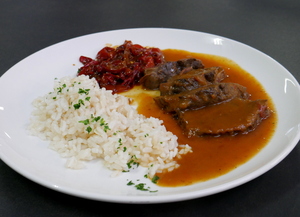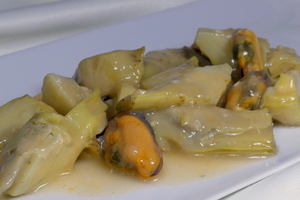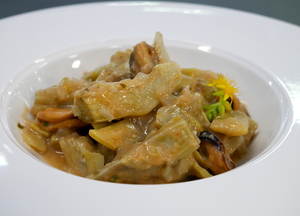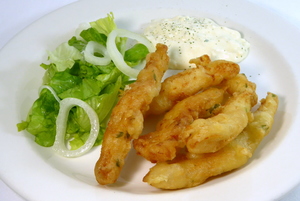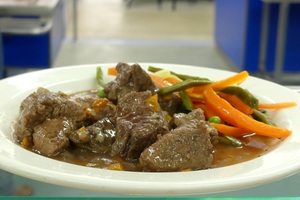Garlic, bulb
Herbaceous plant from the Liliaceae family, perennial, with white or cream coloured secondary bulbs known as garlic cloves. They are very aromatic and they are clustered on a discoid stem and covered by scaly translucid yellow-whitish membranes, which make up the head of garlic.
They grow well in warm weather regions.
Garlic growing is very ancient, going back to Prehistoric times. Its strong taste was considered miraculous and was used both as a medicinal plant and in cooking. It originated from Central Asia, from which it spread to other parts of the world later to be used in most cultures. In ancient Egypt, the slaves that built the pyramids used to consume large quantities of garlic to protect themselves from many ailments and the biblical scriptures talk about their consumption by the Hebrews. It has been of common use in Europe since the Roman Empire and it was already used in India and Asia before the Europeans arrived. It was also introduced into Africa and America during the Colonial times. In the First World War it was used for disinfecting wounds when conventional antiseptics were scarce.
Garlic properties are mainly based on the sulphuric components it contains (allicin, allil, /diallil sulphides). Garlic has been found to have many health benefits such as its antiseptic and anti-inflammatory bactericide, antiviral, antifungal and intestinal antiparasitic effects. “In vitro” studies have indicated that garlic extract, even in low concentrations is a great inhibitor for Helycobacter pylori, the bacteria associated with gastric and duodenal ulcers.
-
Type of dish
- Beers
- Cocktails
- Breakfasts and brunch
- Burguers
- Juices, milkshakes and beverages
- Shellfish
- Bread and pastries
- Pizzas, patty
- Dessert
- Pasta
- Sándwich
- Pastries
- Finger foods
- Ice creams and sorbets
- Legumes
- Salads
- Eggs
- Patty
- liqueur
- Harvard plate
- Main course
- Meats
- Fish
- Birds
- Vegetables
- Soups and creams
- Rices
- Coffee, chocolate and infusion
- Cheeses
- Appetizers and canapes
- Temperature
- Cuisine type
- Additional culinary preparation
- Conservation technique
- Seasonal recipes
-
- Aromatic herbs
- Beverages
- Big game hunt
- Bread and pastries
- Canned goods and pickles
- Cereals
- Condiments, spices and additives
- Cooked, salted, preserved and cold meats
- Dried fruits and nuts
- Dry pulses
- Edible oils and vinegars
- Eggs and derivatives
- Feathered game hunt
- Fish cuts
- Fishes
- Insects
- Kitchen and bakery tecniques
- Kitchen and bakery utensils
- Meat cuts
- Meats
- Milk, cream and derivatives
- Mushrooms
- Offal
- Pasta, rice, flour and derivatives
- Poultry
- Seafood
- Service techniques
- Service utensils
- Vegetables cuts
- Vegetables, fruits, tubers and seaweed












